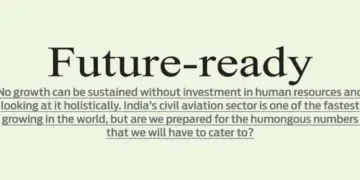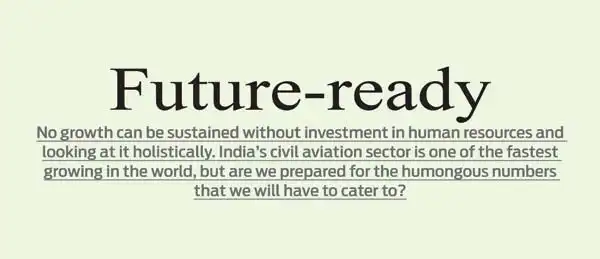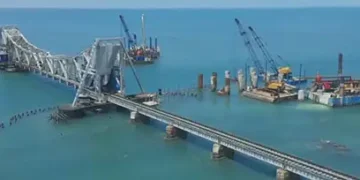K Srinivasan
MANY years back the thenCivil Aviation Secretary Ashok Chawla quipped at a conference at Ficci that while growth is always good, exceptional growth is positively undesirable. Those were the years when aviation was growing at over 10 per cent and there was a huge waiting time to land into the major gateways and the country’s airport infrastructure was being put together in mission mode.
In the intervening years, India’s airport infrastructure has undergone a seismic transformation. And the country has added airports by the dozens to its existing network. World records have been established in the order of new jet aircraft and the domestic and international network has expanded at a searing pace. So, what is the missing piece of the jigsaw?
Human resources
The amount of people required to man airports and critical functions in the air and on the ground is expected to be in the range of close to five lakhs over the next decade and a half. This includes pilots, cabin crew, ground staff, flight despatchers and airport workers in a variety of functions who keep the machinery chugging along. Excepting the cockpit crew, there is hardly any training school for the rest of the staff required for various functions and it is a hit-and-trial process that sees staffing take place across airports.
Apart from all this, there is one other function that, unfortunately, has hardly ever been on the scanner for the yeoman service it delivers day after day in tough conditions with a staff ratio far less than what it out to be. We are talking about the Air Traffic Controllers. International Air Transport Association (IATA) Director General Willie Walsh, while speaking at the IATA Media Day in December last year, highlighted this issue forcefully. “The growth we’re witnessing requires meticulous coordination between airports and air traffic control (ATC), necessitating strategic focus from the Government and regulatory authorities,” he said.
Strategic response
He is right. Projections give a figure of close to 450 million passengers through more than 200 airports by the year 2030. We hardly have the resources to manage such a humongous traffic, especially concerning Air Traffic Controllers. Hmsa Consultancy Services quoting him said: “Walsh emphasised that en route airspace congestion will significantly impact both domestic and international flights over the next decade. This issue demands a strategic response to ensure the smooth integration of air traffic across India’s rapidly growing aviation sector.’’
India has been extremely lucky to have got away from near-misses and aircraft taking off and landing on the same runway with little clearance without a major mishap. We have been plain lucky. But there is plenty to learn from the tragedy at the Ronald Reagan Washington National Airport in late January when a Bombardier CRJ700 operating as an American Airlines flight crashed into a US Army helicopter H-60 Black Hawk just a minute before landing and split into two. Fatigue, short staff, poor training, and excess flights at the airport have all come into question for what happened. We must learn and make sure it never happens. That means getting more Air Traffic Controllers, better training, more rest hours and planning for a six per cent growth year-on-year for decades to come.
































